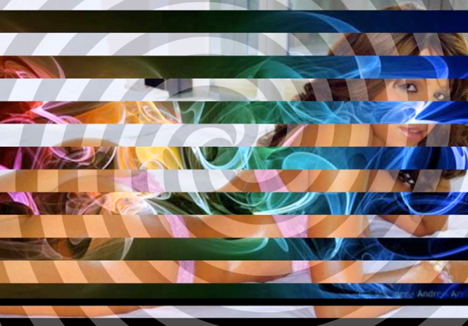 Kate Steciw: Popular Options (Yellow Diamonds in the Light)
Kate Steciw: Popular Options (Yellow Diamonds in the Light)
January 31 – February 13, 2012
View work
Inquire
“You affect the world by what you browse.” - Sir Timothy Berners-Lee, inventor of the World Wide Web
The logical ideal of the Web as an infinitely diverse information-based parallel to our world is much different from the online reality we see today. The distribution of Internet content and usage today is shaped by user trends, as well as sociological factors such as the various forms of the so-called “digital divide” which affect the demographic of Internet users. Analytics tools such as Google Trends have recently given us the means to compare the types of content Internet users want most. The result is a view of another, newer type of popular culture.
Kate Steciw’s research-based artwork Popular Options (Yellow Diamonds in the Light) selects images based on the most popular American search terms of 2011, and combines them using a free web-based slideshow tool along with the highest-rated song of 2011, in an effort to distill the manifestation of popular culture through the peculiar anthropological bias of the Internet.
Steciw has referred to this new form of popular culture in an artist’s statement:
Search terms arise from a confluence of world events, individual curiosity and algorithmically generated preference; these forces come together to encapsulate a cultural phenomena in a single word or grouping of words optimized to retrieve the most relevant data. Google Search presents a cross-platform search allowing results that span media and application to deliver a plethora of information at once exhaustive and absurd (i.e. one can retrieve “shopping” results for Osama Bin Laden). The search has revolutionized the way in which we seek and receive vital cultural information – if you don’t know what “planking” is, you can find out privately and long before you can be derided for your ignorance publicly.
The search terms which define the tastes of the Web are non-authoritarian, decentralized, and are to some extent free from the factors of the professional entertainment world; but, as Steciw’s piece shows, they also reveal the isolated, misplaced, and at times desperate nature of the whims of Internet consumers on aggregate.